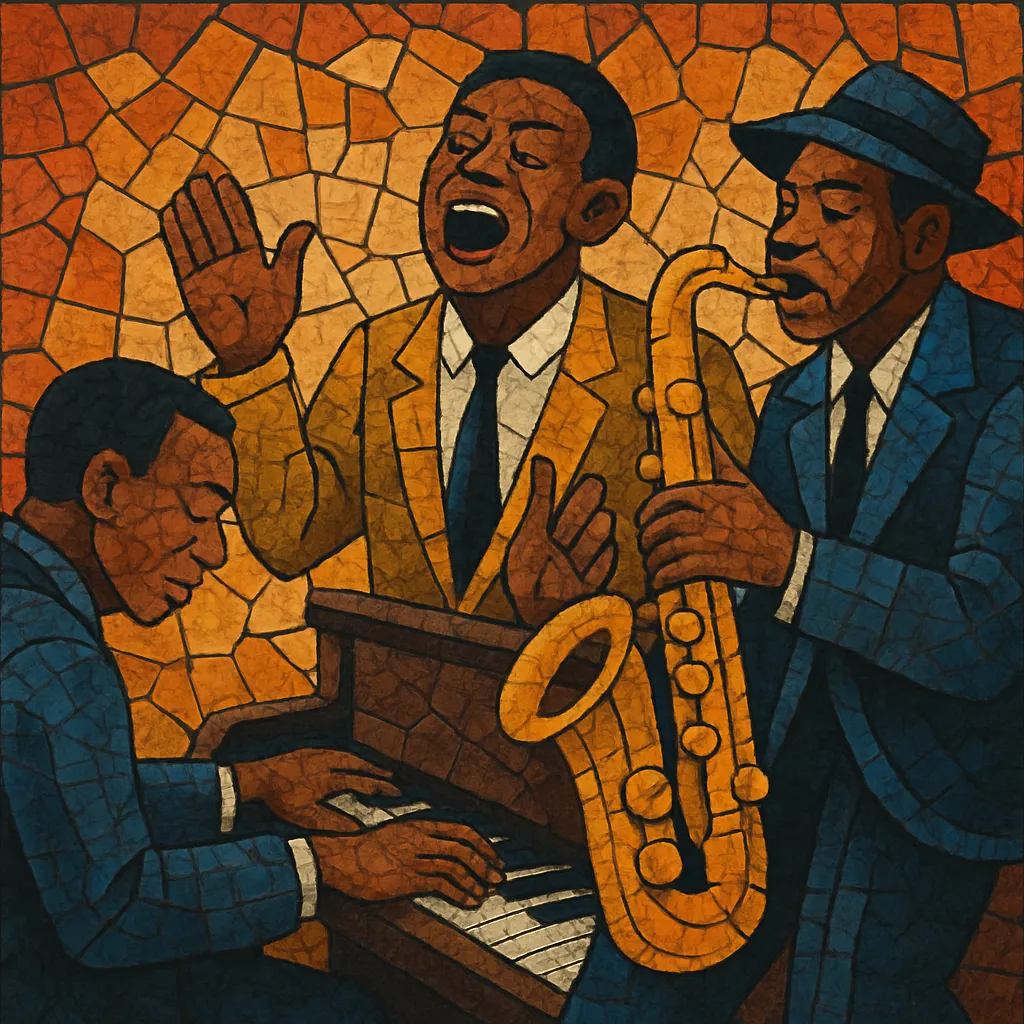Jump blues is a high‑energy, small‑combo offshoot of swing and urban blues that crystallized in the United States during the 1940s. It features driving boogie‑woogie piano patterns, a propulsive shuffle or backbeat, riffing horn sections (often led by tenor sax), and exuberant, shout‑style vocals.
Songs typically use 12‑bar blues or related blues‑based forms at brisk tempos, with catchy call‑and‑response hooks between singer and horns. Lyrics frequently center on nightlife, romance, humor, and double entendres. The style’s compact arrangements, honking sax solos, and dance‑floor focus made it a jukebox staple and a crucial bridge from swing to rhythm and blues and early rock and roll.
As the Swing Era matured, economic pressures and wartime restrictions encouraged bandleaders to downsize from big bands to nimble small combos. These groups retained swing’s rhythmic momentum but emphasized blues forms and boogie‑woogie drive. In this context, jump blues emerged, spearheaded by Louis Jordan & His Tympany Five, whose witty vocals, riff‑based horn charts, and tight shuffle grooves defined the template.
From roughly 1945 to the early 1950s, jump blues dominated “Race Records” charts and jukeboxes. Artists such as Wynonie Harris, Big Joe Turner, Roy Brown, Amos Milburn, Tiny Bradshaw, Bull Moose Jackson, and Johnny Otis scored national hits with up‑tempo shouters built on 12‑bar frameworks, honking sax breaks, and infectious backbeats. Independent labels (e.g., Decca, King, Specialty, Aladdin, Atlantic) cultivated the sound, while regional hubs in Los Angeles, Kansas City, and New Orleans fed its stylistic variations.
Jump blues directly seeded postwar rhythm and blues and early rock and roll. Songs like Roy Brown’s “Good Rocking Tonight” (and Wynonie Harris’s hit cover) codified the celebratory, backbeat‑driven blueprint adopted by rock and roll. The honking‑tenor vocabulary and shout‑sung delivery informed rockabilly, electric blues, and even early Jamaican popular music that would become ska.
By the mid‑1950s, as rock and roll and modern R&B evolved, jump blues receded from the charts but remained foundational. Its repertoire and performance style resurfaced in revival scenes, swing dance communities, and in the repertoires of blues and roots‑rock bands, preserving its role as a lively, dance‑forward link between swing jazz and rock.


